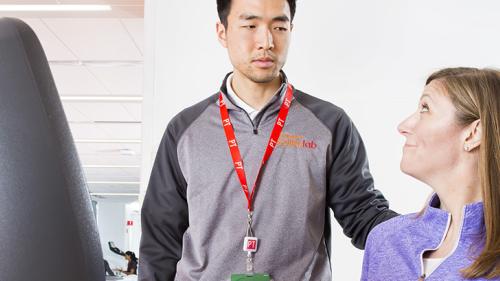About the Pelvic Floor
Body
The pelvic floor is made up of the muscles within the pelvis that support your core. They control the flow of urine and bowel movements, and they are important for intimacy as well. Because they support the core muscles they serve as the starting point for all movement, pelvic floor rehabilitation can help relieve pain, restore function and enable physical improvements.
What is pelvic floor dysfunction?
When the pelvic floor muscles are not working optimally it can lead to "pelvic floor dysfunction" which can be caused by weakness, over-activity or poor coordination of the muscles. Pelvic floor dysfunction can present as many different symptoms such as urinary frequency/urgency, pelvic pain, constipation or urinary/fecal incontinence.
Conditions We Treat
Body
Pelvic health physical therapy treatment has been shown to dramatically improve quality-of-life outcomes. We are trained to treat conditions that affect bladder, bowel and sexual dysfunction as well as pregnancy/postpartum related issues. We treat a wide range of conditions, including:
- Pain
- Vulvar
- Testicular/scrotal
- Pain with intercourse
- Pain with gynecological examinations
- Vaginismus
- Coccydynia
- Interstitial cystitis
- Endometriosis related pain
- Bladder
- Urinary incontinence
- Urinary frequency/urgency
- Incomplete emptying
- Post-void dribbling
- Neurogenic bladder
- Bowel
- Constipation
- Fecal incontinence
- IBS related symptoms
- Fecal frequency/urgency
- Neurogenic bowel
- Pregnancy/postpartum
- Pain during pregnancy
- Pelvic organ prolapse
- Diastasis recti
- Sexual dysfunction
- Pain with intimacy
- Erectile dysfunction
- Premature ejaculation
- Cancer rehabilitation
- Breast
- Urogynecological
- Colorectal
- Prostate
- Gender affirming care
- Post-operative chest surgery, vaginoplasty and phalloplasty
Better Outcomes for Patients
Body
Our team of physicians and physical therapists have specialized training in pelvic floor muscle disorders. Shirley Ryan AbilityLab’s pelvic health program is unique for key reasons, including:
- It is led by a physiatrist who is not only a physician specialist in physical medicine and rehabilitation (PM&R), but specifically rehabilitation of pelvic floor dysfunction.
- We treat everyone — men, women, transgender, gender-neutral or nonbinary individuals. We are the only rehabilitation research hospital that does.
- Our services are fully integrated to reflect the whole patient’s health. Our physicians and physical therapists work with other specialists as needed to address our patients' complaints.
- Our team specializes in treating pelvic health concerns in patients throughout our levels of care.
Interventions that can be utilized
Body
By physical therapy:
- Postural corrections
- Biofeedback
- Rectal balloon training
- Manual therapy
- Strengthening (core, glutes, pelvic floor etc)
- Bladder retraining
- Behavioral changes
- Breathing mechanics
- Stretching
- Electrical stimulation to weak muscles
What to expect at your first pelvic floor physical therapy appointment:
Body
Your first visit will begin with you being able to tell your PT the symptoms you are experiencing and your PT will likely have questions about your specific symptoms and other functions of the pelvic floor.
Then you will be provided with extensive education on the pelvic floor muscles and the bony anatomy of the pelvis as well as how this anatomy/physiology may be related to your specific complaints.
The examination portion will be next which may just include:
- Posture
- Breathing mechanics
- Spinal mobility/alignment
- Strength of your core and legs
- Mobility of the abdomen, hips and any scars
With your consent, the first visit's examination may also include assessment of the pelvic floor itself to assess the resting activity, strength and coordination of these muscles. Depending on your symptoms and your anatomy, this may be performed either vaginally or rectally via your therapist inserting one finger internally. If you are not comfortable with this or this is not possible based on a history of pain with gynecological examinations, you and your therapist can discuss other options to start with and can determine the right time for this initial assessment.
You will likely leave your visit with something to work on at home before your next visit which may be breathing, stretches, behavioral changes or strength exercises.
Mentioned Page
Request an Appointment
FormPhysician
PHYSICAL THERAPISTS
Ariana Jones, PT, DPT
Jenna Iberle, DPT
Kathleen Darley, DPT
Melissa Richter, DPT
Anna Klipstein, DPT
Christine Pong, DPT
Michelle Laygo, DPT
Jessica Connelly, DPT
Kristen Mandujano, DPT



